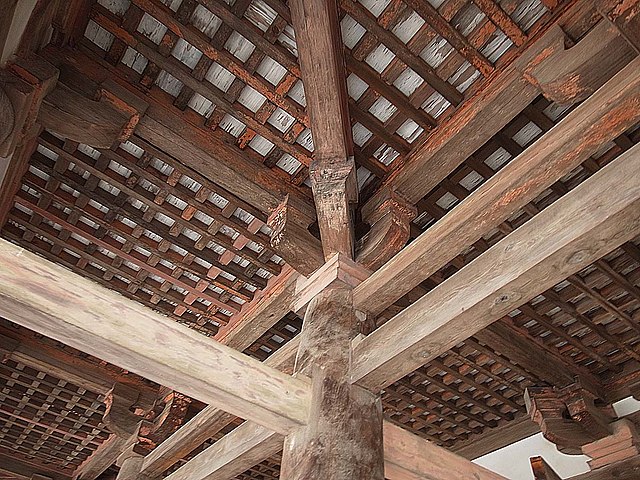The Sakyamuni Pagoda of Fogong Temple of Ying County, Shanxi province, China, is a wooden Chinese pagoda. It is also known as the Wooden Pagoda of Ying County. It was constructed in 1056, during the second year of the Khitan-led Liao dynasty and was renovated and expended in 1195 during the sixth year of the Jin Dynasty. The pagoda was built by Emperor Daozong of Liao (Hongji) at the site of his grandmother's family home. The pagoda, which has survived several large earthquakes throughout the centuries, reached a level of such fame within China that it was given the generic nickname of the "Muta".
Front view of the Sakyamuni Pagoda of Fogong Temple
Close-up detail of the dougong supports of the pagoda.
The pagoda and temple grounds
The pagoda and temple grounds
A pagoda is a tiered tower with multiple eaves common to Thailand, Cambodia, Nepal, China, Japan, Korea, Myanmar, Vietnam, and other parts of Asia. Most pagodas were built to have a religious function, most often Buddhist, but sometimes Taoist, and were often located in or near viharas. The pagoda traces its origins to the stupa, while its design was developed in ancient India. Chinese pagodas are a traditional part of Chinese architecture. In addition to religious use, since ancient times Chinese pagodas have been praised for the spectacular views they offer, and many classical poems attest to the joy of scaling pagodas.
Shwedagon Pagoda of Yangon, Myanmar
The Lingxiao Pagoda of Zhengding, Hebei, built in 1045 AD during the Song dynasty, with little change in later renovations
The Xumi Pagoda, built in 636 AD during the Tang dynasty.
Floor-support structure in a corner of the Horyuji temple.








